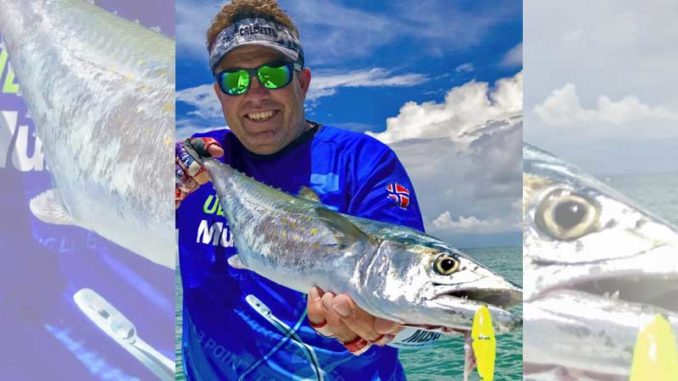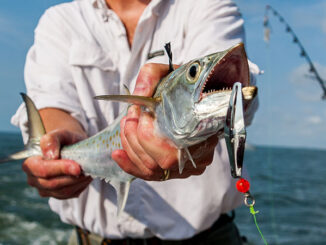
Some good-sized fish will be in the mix
Guide Noah Lynk of Harkers Island expects the fall of 2019 to provide good-to-excellent fishing for anglers in nearshore waters around North Carolina’s Crystal Coast.
“The Spanish mackerel will be fat, and 4- to 6-pounders will be in the mix,” said Lynk, of Noah’s Ark Fishing Charters. He fishes the waters off Cape Lookout.
Lynk (252-342-6911), said an early mullet run that began in late August pulled Spanish mackerel inshore this year.
“When October gets here, they’ll be thick around the inlets and shoals,” he said. “They’ll start feeding up for winter. And they can be in shallow water, sometimes just a couple of feet (deep).”
However, he’ll mostly chase them in deeper water at places such as the Cape Lookout rock jetty, Atlantic Beach or Shackleford Banks, if the wind’s from the northeast and waves are small.
Lynk also looks for false albacore feeding in schools. They’ll mix with Spanish and hit the same lures. To find Spanish or albacore, he looks for diving birds attacking silversides or anchovies. King mackerel and big bluefish may also join in.
Access has gotten easier thanks to recent storms and hurricanes
With a southeast wind, the east side of Cape Lookout’s shoals “will be rockin’, if you don’t mind getting there,” Lynk said. “But after (recent) hurricanes, it’s got 12-foot (deep) sloughs across the shoals. So you can cross at those places. I don’t understand why some people go all the way to the end of the shoals now.”
With relatively calm water, Lynk may troll or cast to feeding fish.
“It’s hard to beat trolled 5- or 6-inch Yo-Zuris for Spanish,” said Lynk, who trolls two lures from rods. He also sometimes adds two more handlines on planers. “They’ll also draw king strikes.
“You also can cast Yo-Zuris, but I like to throw Halco jigs at ’em,” Lynk said. He’s especially fond of a new model that includes a 2- or 3-inch Twisty, a flashy jig that can be cast a long way.
“They work well because you don’t have to get right up on (a school of fish),” Lynk said. “If you ride up to a school, you’ll make ’em dive.”
Lynk’s equipment includes a 7-foot, light-medium Star Rod, a 2500 or 3000 series spinning reel, 12-pound braid and 2 to 3 feet of fluorocarbon leader.
Click here to read more about king mackerel fishing in the Carolinas.




Be the first to comment